Sometimes the thing you really need is breathing room, says Malcom Yeung, executive director of Chinatown Community Development Corporation. His organization got a bit of that through funding from NeighborWorks America, in partnership with the Wells Fargo Foundation. Grants from NeighborWorks America's Critical Relief Fund and Rental Resilience Fund allowed staff to focus on their work and on their residents.
"It put us in a position where we weren't thinking about or worrying as much about layoffs from the nonpayment [of rent] but thinking about how we can amplify our operations in response to COVID-19," Yeung says. "It was a huge framework shift."
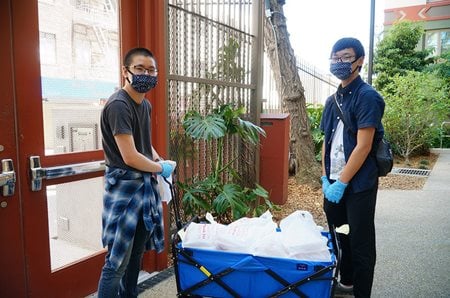 The funding gave the organization the space to consider their top priority. "We were able to think about how to keep our residents safe," Yeung says. Chinatown CDC has 36 buildings in its rental portfolio and works with 5,000 residents.
The funding gave the organization the space to consider their top priority. "We were able to think about how to keep our residents safe," Yeung says. Chinatown CDC has 36 buildings in its rental portfolio and works with 5,000 residents.
Priorities for the NeighborWorks nonprofit included procuring personal protective equipment and cleaning supplies. "We were sourcing directly from China when it was available," he says. "I'd argue we did it earlier than anyone else. And that's because we were able to get support, including NeighborWorks America and Wells Fargo."
While some businesses – and even some NeighborWorks organizations – laid off staff, Chinatown CDC hired a new staff person to coordinate the distribution of equipment. It was challenging, Yeung says, because it involved education programs in multiple languages. But it had a huge return. "We found that if we did education in a certain building, the mask use went up."
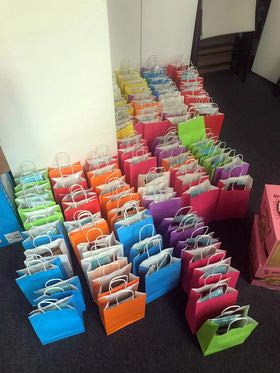 Meanwhile, Chinatown CDC began upgrading air ventilating systems in the common areas of nine of their single-room occupancy (SRO) hotels. Chinatown CDC had already rehabbed two of their buildings. But as the work took place, the estimate, which started at $120,000, began to rise. "It's closer to $210,000 now."
Meanwhile, Chinatown CDC began upgrading air ventilating systems in the common areas of nine of their single-room occupancy (SRO) hotels. Chinatown CDC had already rehabbed two of their buildings. But as the work took place, the estimate, which started at $120,000, began to rise. "It's closer to $210,000 now."
Residents living in SROs have their own rooms but share kitchens, bathrooms and laundry facilities. "We're tacking air quality right now," Yeung says. That includes HEPA filtration systems for Chinatown CDC offices.
Funding from NeighborWorks America also aided Chinatown CDC's Feed and Fuel Chinatown program. Between April and June, they engaged 34 restaurants to distribute 122,000 meals. The switch to air came after other organizations began providing food assistance. "We believe that the early work we did to keep SRO residents out of kitchens helped keep transmission rates down," Yeung says. "So far, the SROs haven't had a significant level of COVID-19 cases. With the coming surge, we hope that the air quality work we have done will continue to keep SRO residents as safe as possible."
The organization is dipping into operating reserves to help offset the decrease in rental payments, when individuals find themselves unable to meet obligations. "Our SRO organizations have a much lower operating observe, so to be able to fund some of this, we need to rely on the funding."
Yeung says he's spoken with other executive directors in the NeighborWorks network, and with other nonprofits as well. "People are responding to this in unique ways," he says. But there are commonalities. Most organizations are aiding in food distribution. "Organizations who do food ramped up; organizations who don't do food jumped in."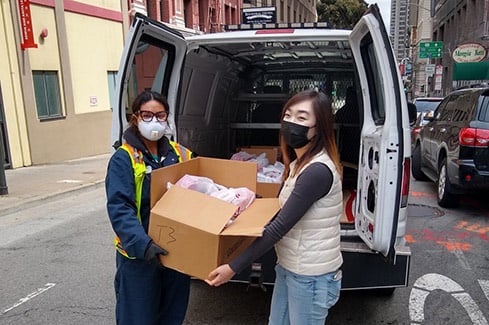
Across the board, Yeung also sees an increase in eviction prevention and education services. "That's us, too," he says. "In-person counseling was still a necessity so we made modifications early on so we could continue that. We had to reconfigure offices and put up plexiglass shields. We turned our conference rooms, which we were no longer using, into socially distant counseling spaces."
Next steps include onsite health screenings – not for COVID-19, but for medical issues for which residents may not seek treatment because of the pandemic. "We want to make sure our residents have the ability to see health care providers."
In San Francisco, Yeung says public health officials haven't yet committed to scaled up COVID-19 testing in SROs. "I find that troubling," he says. "They're not willing to do building-wide testing unless there are four or more cases. By that time, there's already an outbreak. We believe testing in SROs should occur with just one case."
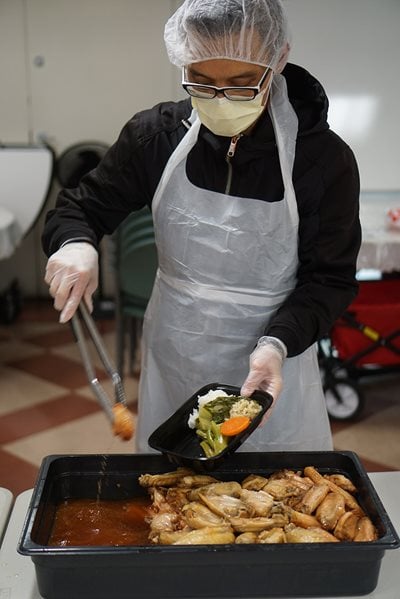 YinYin Zhu, who works in resident services at Chinatown CDC, oversees buildings populated by seniors and people with disabilities. She remembers March, when shutdown orders started in the United States. "They didn't know what was going to happen in their daily lives," she says of residents. "They didn't know how it would affect daily food supplies. Would they still be allowed to receive in-home support services?" Staff began assessing residents weekly on their basic needs. They would talk and talk. "Sometimes the conversations would go from half an hour to an hour," Zhu says.
YinYin Zhu, who works in resident services at Chinatown CDC, oversees buildings populated by seniors and people with disabilities. She remembers March, when shutdown orders started in the United States. "They didn't know what was going to happen in their daily lives," she says of residents. "They didn't know how it would affect daily food supplies. Would they still be allowed to receive in-home support services?" Staff began assessing residents weekly on their basic needs. They would talk and talk. "Sometimes the conversations would go from half an hour to an hour," Zhu says.
The organization tried to cheer residents, bringing them gift bags for October's Mid-Autumn Festival, also known as the Mooncake festival. The festival is held at the end of the harvest season. "They usually get together with families and have dinner, especially mooncakes," she says. "In normal years, residents would go to their children's house or their children would come visiting. But because of COVID-19, it became a virtual celebration. And the gift bags were more appreciated."
In Zhu's buildings, where the government subsidizes many rents, they didn't see the rental gaps that hinder other communities. When residents do lose jobs, staff helps steer residents to rental assistance.
"It's been eight months," Zhu says. "I think they've accepted that this is a way of life; this is how we're living this year. They're calmer now."
Efforts are going into teaching seniors how to use technology to keep in touch with family and friends. "At first, they wanted just to talk on the phone," she says. "But now, a lot of residents are eager to learn Zoom. They are saying ‘We are really bored. We will take whatever you have.'" The seniors just had their first Bingo night on Zoom, and residents had a blast, she says.
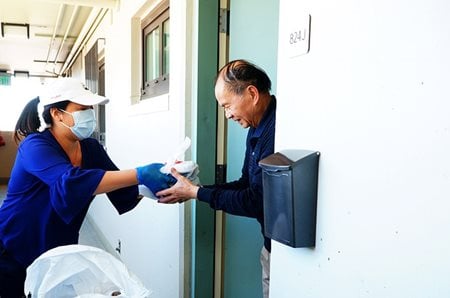 Rodney Mitchell, a residential services supervisor, has spent this year working with residents who need clinical support or assistance navigating other services. He helps them seek out rental assistance and works with them on developing social skills for community living. Before COVID-19, he says, residents were more confident in their living environment. Now, he says, he sees more urgency, more stress. "They're worried about their health and safety and changes in financial positions," he says. "They're worried about getting their rent paid – or not being able to pay and navigating the system."
Rodney Mitchell, a residential services supervisor, has spent this year working with residents who need clinical support or assistance navigating other services. He helps them seek out rental assistance and works with them on developing social skills for community living. Before COVID-19, he says, residents were more confident in their living environment. Now, he says, he sees more urgency, more stress. "They're worried about their health and safety and changes in financial positions," he says. "They're worried about getting their rent paid – or not being able to pay and navigating the system."
It's hard to move fast enough. Mitchell says he helped a resident submit a claim in April, but that resident didn't receive a response from the housing authority until October. His office helps bridge the communication gap with residents – and with the housing authority, too. "It's created a lot of anxiety," he says. "We help them navigate the process."
Navigating is something many NeighborWorks organizations have been helping their residents do, filling out forms and applications and signing up for food delivery or medical care. The grants they receive from NeighborWorks America, with help from the Wells Fargo Foundation, help them find the staff and the time to fulfill their mission of making a difference.
12/10/2020

